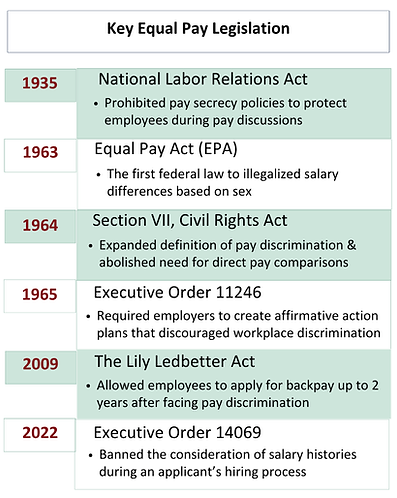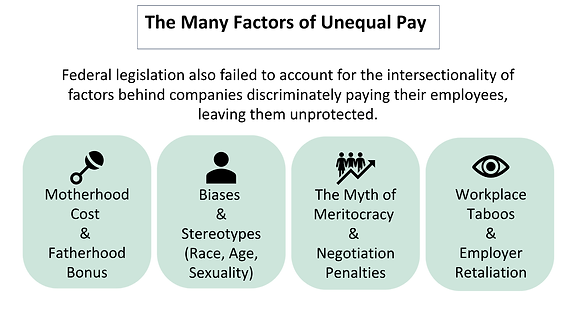
ABOUT
PAY TRANSPARENCY
A crucial benefit of pay transparency legislation is the connection it makes between the current societal structures that perpetuate pay inequality and the individual who knows they are likely being underpaid but currently lacks the information to know in what ways they are being denied opportunities and by how much. Understanding the history behind the fight for equal pay is essential to grasping the importance of these laws and the multitude of ways they can be used.
A Brief History
Given that, currently, female employees make 83 cents compared to every dollar earned by a white male employee in the U.S., it might surprise you that federal legislation had equal pay legislation on the books for over half a century. Not to mention, a century ago, federal laws were passed aimed at ending the culture of pay secrecy in American companies.
However, this does not mean the laws themselves are ineffective as states that have passed Pay Transparency laws are closing their local wage gaps up to 2x faster than the national average. Thus, it becomes clear the issue at the federal level lies centrally with enforcement of such laws.
Continued advocacy for federal legislation and enforcement of equal pay laws is essential. However, as of 2025, the current presidency has rescinded both Executive Order 11246 and 14069, further stalling momentum at the federal level toward closing the wage gap. With this in mind, states are in a prime position to have a positive impact and it is up to us, as a people, to encourage local lawmakers to continue passing and enforcing laws proven to close the wage gap.

Factors Behind the Gap

One of the reasons behind the pervasiveness of pay discrimination is the intersection of many structural inequalities, some subtle. Below are just a few examples of how employees have and continue to face such barriers.
The Myth of Meritocracy
-
Female and other marginalized employees often hit a glass ceiling when it comes to promotions and growth opportunities.
- Companies that determine promotions based on merit often subject female employees to a double standard where they are admonished for traits praised in male employees.
van Dijk, Hans, et al. "Meritocracy a myth? A multilevel perspective of how social inequality accumulates through work." Organizational Psychology Review 10.3-4 (2020): 240-269.

Unequal pay creates a vicious cycle where it costs female employees more to stay in the workforce, perpetuating disparities & occupational segregation.
THE COURTS & COMPENSATION
Courts play an important role in pay equity by clarifying legislation and allowing employees to take matters into their own hands when facing pay hostility. California's Equal Pay Act, for example, was strengthened after San Francisco's Superior Court ruled Apple had violated the Act by skirting around the Act's Pay History Ban through discovering their prior pay under the guise of asking employees for their "pay expectations." Read Cohen Milstein's press release on the case below.
